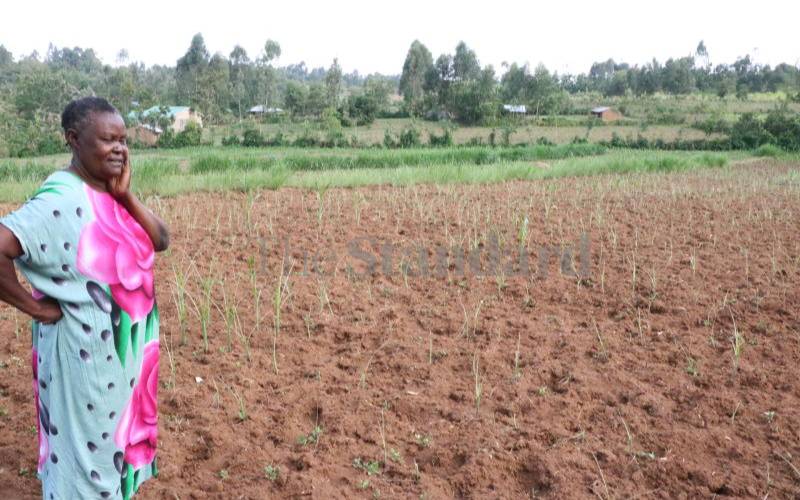×
The Standard e-Paper
Fearless, Trusted News

Margaret Anyona Amariati inspects her farm at Emulundu village in Lurambi. Fall armyworms have invaded her three acres of land. [Benjamin Sakwa, Standard]
Margaret Anyona Amariati, a farmer in Lurambi, Kakamega does not know where the fall armyworms (FAW) that have occupied her farm came from, just like scientists who are assessing the damage caused by the pest, a native of the American tropics.